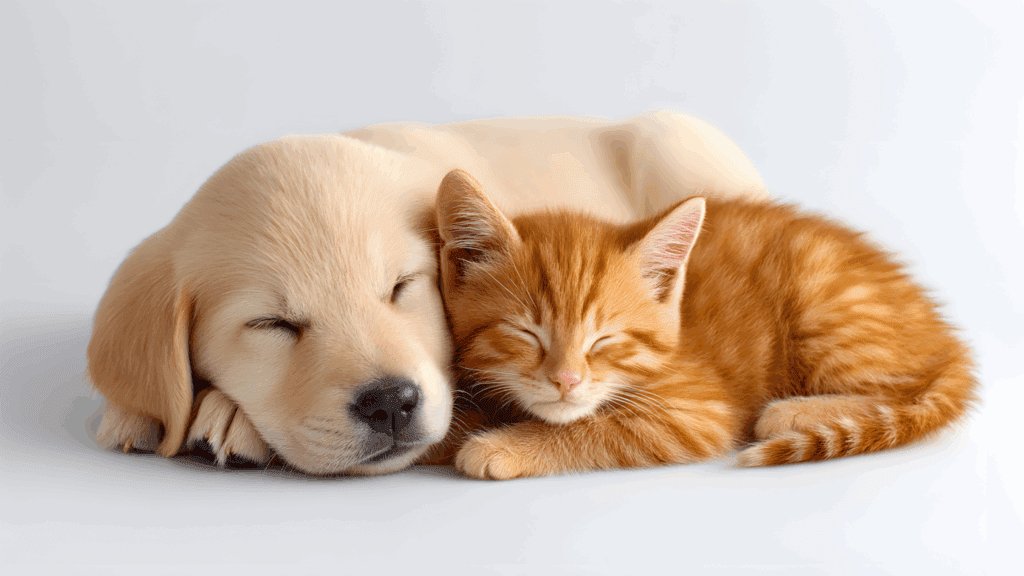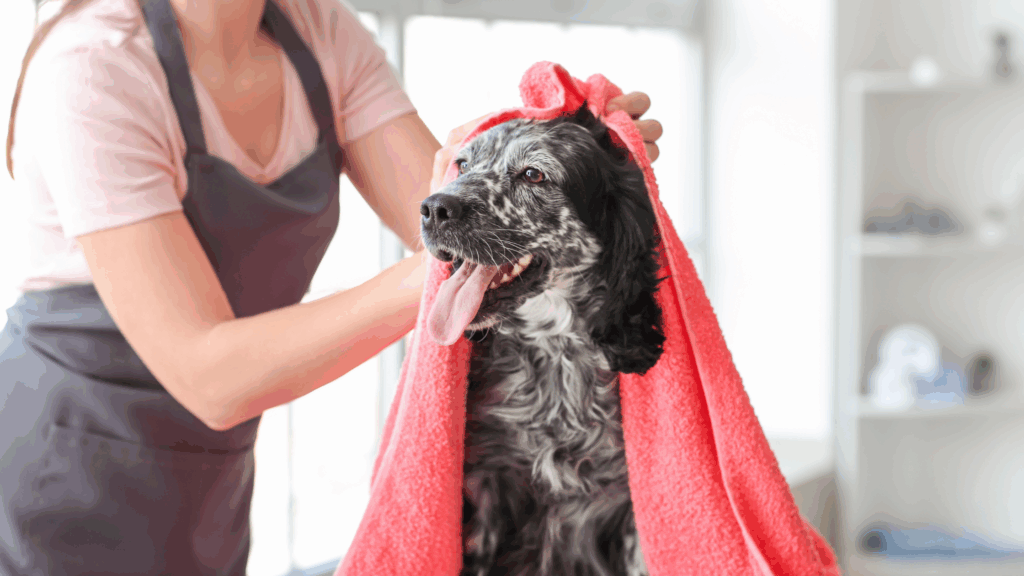Are Cats Smarter Than Dogs? The Science Might Surprise You!
For centuries, pet lovers have battled over a timeless question — are cats smarter than dogs? From their clever antics to their unique personalities, both animals display fascinating behaviors that make the debate even more intriguing.
A 2017 study by Vanderbilt University found that dogs have about 530 million cortical neurons, while cats possess around 250 million. This difference suggests that dogs may have greater potential for complex behavior and learning. However, neuron count isn’t everything — and cats have their own intellectual strengths that science is only beginning to understand.

Defining Intelligence in Animals
What Makes an Animal “Smart”?
Animal intelligence isn’t just about obeying commands or solving puzzles. It encompasses memory, learning, social awareness, adaptability, and problem-solving. Intelligence also depends on how animals interpret and respond to their environment.
Types of Animal Intelligence
Experts categorize intelligence into several types:
- Social Intelligence – Cooperation, communication, empathy
- Technical Intelligence – Tool use, manipulation, and problem-solving
- Emotional Intelligence – Recognition of emotions in themselves and others
Both cats and dogs exhibit these forms differently, reflecting their evolutionary backgrounds.
Brain Structure: A Scientific Comparison
Brain-to-Body Ratio
When comparing are cats smarter than dogs, scientists often look at the encephalization quotient (EQ) — the brain-to-body size ratio. Cats generally have a higher EQ than dogs, implying more brain power relative to their size.
| Animal | Average Brain Size | Brain-to-Body Ratio | Implication |
| Cat | 25–30 grams | 1:100 | High cognitive efficiency |
| Dog | 60–100 grams | 1:125 | Larger but less dense brain |
Neuron Count and Cognitive Processing
Dogs’ larger number of cortical neurons allows for more data processing and control of body functions. Cats, however, may compensate with sharper focus and efficiency, using their neurons more strategically.
Cats’ Intelligence Explained
Memory and Learning in Cats
Cats have exceptional short-term and long-term memory, especially when related to survival or comfort. They remember the location of food, threats, and even people’s behaviors. Studies suggest cats can retain information for up to 10 years in some cases.
Problem-Solving and Adaptability
Ever watched your cat figure out how to open a door or turn on a faucet? Cats excel in independent problem-solving — they observe, experiment, and adapt. Unlike dogs, they rarely rely on human cues, showcasing self-reliance and creativity.
Independence as a Sign of Intelligence
While dogs seek validation, cats act on logic and curiosity. Their independence doesn’t indicate arrogance — it’s a form of cognitive freedom that allows them to act according to reason rather than reward.
Dogs’ Intelligence Explained
Social Learning and Obedience
Dogs are social geniuses. They evolved alongside humans for thousands of years, learning to interpret facial expressions, gestures, and tone of voice. This social intelligence makes dogs exceptional companions and service animals.
Emotional Intelligence and Empathy
Dogs can read human emotions and respond accordingly. Studies show that dogs’ brains react similarly to human brains when they hear emotional sounds, proving a deep empathetic connection.
Working Dogs: Training and Task Performance
From guiding the blind to detecting explosives, dogs demonstrate applied intelligence — learning, remembering, and executing commands under pressure. This structured learning ability highlights a different dimension of cognitive skill.
Memory Power: Who Remembers Better?
When it comes to episodic memory (recalling past events), cats outperform dogs. A study from Kyoto University found that cats remember past experiences involving humans for up to 16 hours, longer than most dogs.
However, dogs excel at associative memory — remembering actions linked to rewards or punishments — making them highly trainable.
Communication Skills: Verbal vs. Non-Verbal Cues
Cats use subtle cues like ear positions, tail flicks, and purring to communicate. Dogs, on the other hand, master both verbal commands and body language.
| Communication Style | Cats | Dogs |
| Verbal Recognition | Limited | Strong |
| Body Language | Complex | Direct |
| Human Understanding | Moderate | High |
Dogs adapt to human communication better, while cats excel in nuanced interspecies signals.
Problem-Solving Tests: Who Wins in Experiments?
In puzzle-based studies, dogs outperform cats in structured problem-solving. Yet, when no reward is visible, cats lose interest faster — not because they can’t solve the puzzle, but because they refuse to engage without purpose.
This difference shows motivation plays a key role in interpreting intelligence — dogs seek approval, cats seek logic.

Social Intelligence: Pack Mentality vs. Solitary Thinking
Dogs’ pack-based intelligence fosters cooperation and leadership recognition. Cats, being solitary hunters, focus on self-reliance and personal survival strategies.
Both systems represent distinct evolutionary successes — dogs thrive through teamwork, cats through independence.
Training and Obedience: A Different Kind of Smart
Dogs rank high in obedience, capable of learning over 150 words and commands. Cats learn too — they simply choose when to respond. Many cat owners report that their pets understand their names and routines but selectively obey depending on mood or motivation.
Emotional Intelligence: Do Pets Feel Like Us?
Dogs express affection openly, mirroring human emotions. Cats, however, exhibit affection subtly — through slow blinks, kneading, or quiet companionship. Both understand human moods, but cats respond with quiet empathy, while dogs offer active comfort.
Instinct vs. Intelligence: The Survival Game
Cats’ instincts are finely tuned for survival — stealth, hunting, and self-grooming. Dogs rely more on learned behaviors, showing adaptive intelligence through training and teamwork.
This distinction illustrates that intelligence depends on context, not species superiority.
Scientific Studies Comparing Cats and Dogs
Multiple studies indicate dogs may have the edge in neuron count and learning versatility, while cats excel in memory and independence.
| Study | Finding | Source |
| Vanderbilt University | Dogs have twice as many cortical neurons as cats | Vanderbilt University |
| Kyoto University | Cats show stronger episodic memory | Kyoto University |
Popular Myths About Cat and Dog Intelligence
- Myth 1: Dogs are smarter because they obey — False. Obedience reflects motivation, not intelligence.
- Myth 2: Cats don’t love humans — False. They express affection differently.
- Myth 3: Intelligence equals friendliness — False. Social and cognitive intelligence are separate.
Final Verdict: Who’s Smarter — Cats or Dogs?
So, are cats smarter than dogs?
The answer isn’t black and white. Dogs exhibit superior social and emotional intelligence, making them ideal human companions. Cats, on the other hand, display analytical, memory-based, and independent intelligence that highlights strategic thinking.
Ultimately, both species are brilliant in their own ways — each mastering the art of survival, adaptation, and connection with humans.
Conclusion
When you explore are cats smarter than dogs, it’s clear that intelligence manifests differently across species. Dogs shine in emotional and social learning, while cats reign supreme in independence and memory. The truth? Intelligence isn’t about who’s better — it’s about how they think, adapt, and love us in their own unique ways.
FAQs
1. Are cats more intelligent than dogs scientifically?
Not exactly — dogs have more neurons, but cats excel in memory and problem-solving.
2. Which pet learns faster, cats or dogs?
Dogs generally learn commands faster, while cats learn by observation and repetition.
3. Can cats understand human emotions like dogs?
Yes, though they respond differently — cats use subtle body language rather than overt affection.
4. Are dogs more loyal because they’re smarter?
Loyalty is emotional, not intellectual. Dogs’ pack instincts drive loyalty, not intelligence.
5. Do cats recognize their owners’ voices?
Yes, studies confirm cats can distinguish their owner’s voice but may choose to ignore it.

















